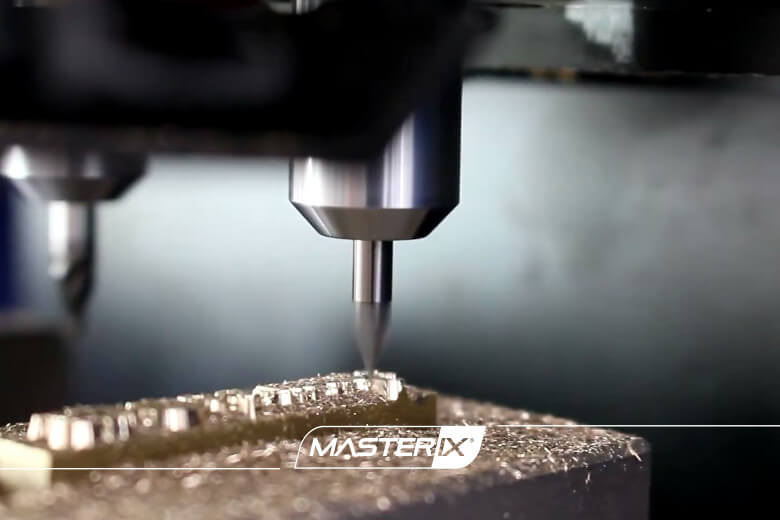For both production and prototyping, we can choose among three very different and highly technological systems. Although all of them have excellent results, they are not equally convenient for the different productive fields.
3D printing, lost-wax casting and computer numerical control precision machining work with the utmost precision and minimum dimensional tolerance.
What changes is the process by which they arrive at this result. If we think of the goldsmith and jewelry sector, only one of these methods is really convenient. Let’s find out which.
3D printing
3D printing “translates” a CAD design into a three-dimensional object using materials such as resins and waxes. It is an additive manufacturing that allows the production of objects of all sorts of shapes and sizes, adding the material one layer after another. The printer follows the instructions from the software and repeats them to create a solid, even with extremely complex shapes.
3D printers for the goldsmith sector: which opportunity?
There are different kinds of 3D printers for prototyping and producing jewelry: filament, resin, wax or precious metal printers. What changes is the process they work with, different precisely because of the specific properties of the different materials.
3D filament printers produce three-dimensional objects adding one layer of polymeric plastic filaments after another. The printer extrudes these filaments and moves them to the working plate. After each layer, the axis of the printer rises and adds the next one, till the end of the process.
A 3D resin printer is equipped with a laser or a built-in projected light, which allows it to harden the resin as the layers are added. The liquid resin in which the axis plunges is light-cured below the plate: basically, the object is printed upside-down.
The 3D wax printer creates objects adding drops of wax one after another until the desired result is achieved.
3D precious metal printers do exist in the market, but there are very few of them and their price is so high that the initial investment could hardly be recovered. In addition, 3D printing is a precise production, although extremely slow when compared with casting.
As we have already seen in our insight about the lost-wax casting, with one tree we can produce many pieces at the same time. To achieve the same production rate with the 3D printer, many printers working at the same time would be needed.
3D printing, therefore, is an excellent system for the creation of prototypes and short runs, but not so well for the production of large series, both for the cost of the machine and the material and the production time.
Lost-wax casting
Lost-wax casting is a complex procedure. First of all, we create the rubber mold in which the wax is injected, and then we proceed with the welding of the waxes obtained on the tree and the dipping in the plaster solution. When the plaster is placed into the oven the melted wax runs off and the plaster cylindre - the mold - can be used as a casing for the cast of molten metal.
Lost-wax casting for the production of jewels and fashion accessories
This is the most accurate and convenient manufacturing system for the goldsmith sector, since it can offer the highest productivity and an optimization of time and costs.
Precision casting, first of all, does not generate waste because we use the exact amount of precious metal we need. Molten metal is cast inside the cylinder and, once it is cold, we proceed to collect the molds. All the pieces are detached from the tree, but the tree the various pieces were attached to is not wasted, since it is retrieved and reused for other castings, without the slightest waste. It is a crucial issue for the goldsmith sector, working with materials with extremely high prices.
As for quality, we can count on perfect, repeatable outcomes. Time is another key factor: thanks to the wax tree, we can produce many pieces in a very short time.
Computer numerical control machining: milling and turning, the subtractive method
CNC mills and lathes are excellent tools for the production of geometrically complex shapes. A mill is a rotating machine with cutting edges; a lathe turns the piece to be worked while the cutting tool remains in its place.
These machines have a very high level of automation. They can read a software and turn it into movement. Milling and turning, however, are subtractive processing: they remove the material from a single block until the desired shape is obtained.
Without going into details, it is already clear that milling and turning are not suitable for the goldsmith sector. Any process that involves such a waste, in fact, cannot be used in the precious metal sector.
Which one to choose for the jewelry sector?
The answer is pretty easy: for the world of gold and precious metals, lost-wax casting is the most convenient system. 3D printing, besides having extremely high costs for the machines and the materials, is pretty slow and cannot maximize productivity.
What’s more, 3D printers work with resins and filaments. Their melting is much more complex than wax, which has the huge advantage of melting with heat and completely running off. There is, therefore, a risk that residues of material will remain.
Mechanical precision manufacturing, on the other hand, is very quick. A subtractive method, though, cannot be used for the goldsmith sector, since every waste of precious metal is a missed investment. The same could be said for less precious metals: also the turning of brass, for instance, generates shavings, the waste material that cannot be saved.
In conclusion, lost-wax casting is the best answer to the specific needs of the precious metal sector because:
- it does not produce waste
- it ensures a perfect repeatability
- it provides the best outcomes
- it optimizes costs and time




